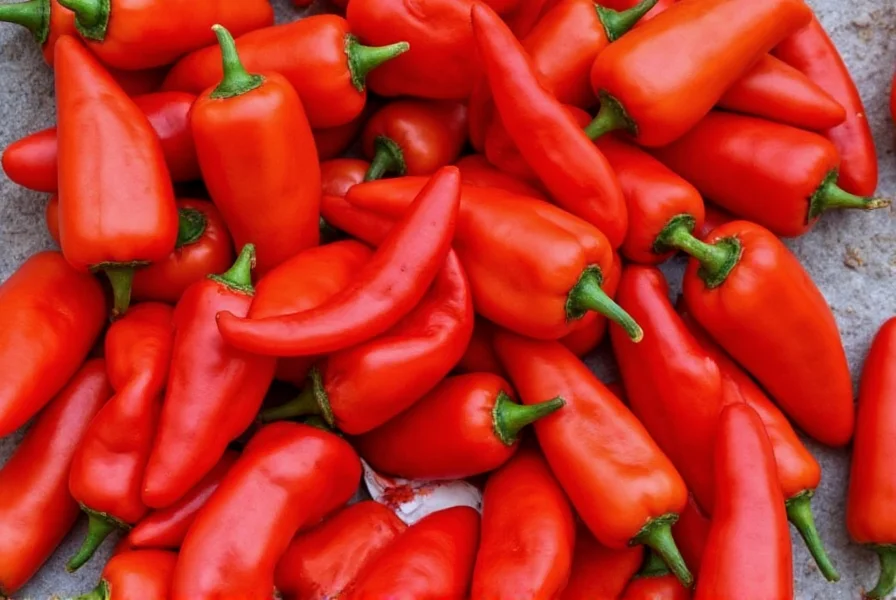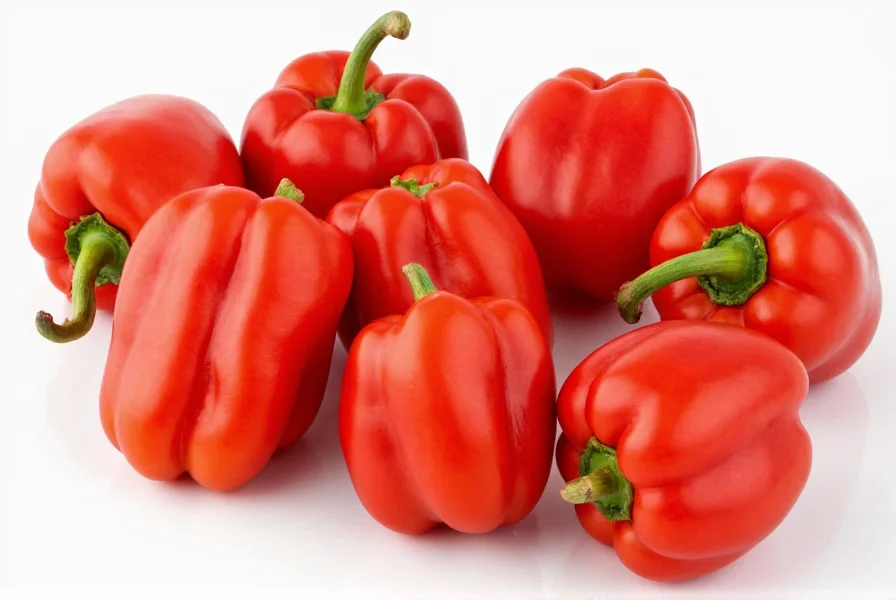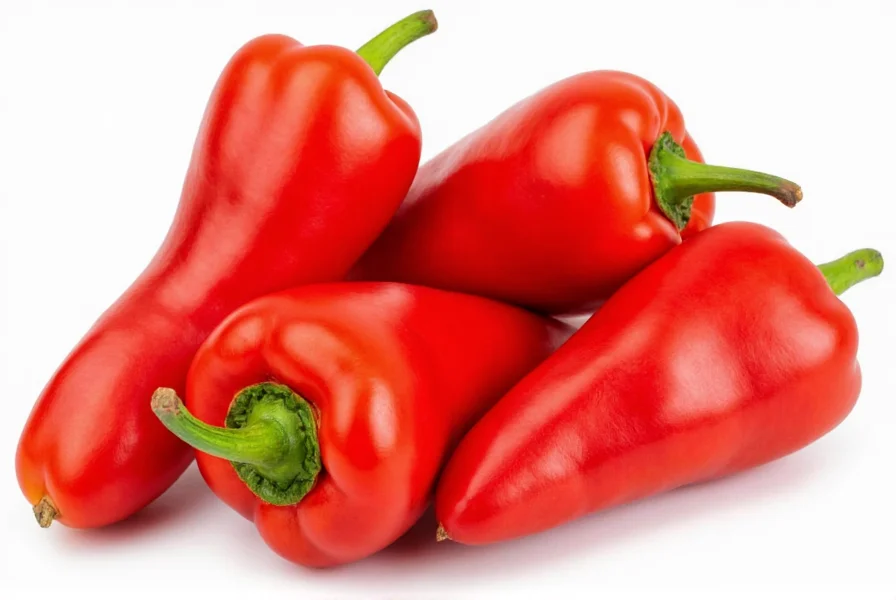Paprika peppers represent a specialized category within the Capsicum family that many home cooks and even culinary enthusiasts often misunderstand. These aren't just any red peppers you might find at your local grocery store—they're carefully cultivated varieties specifically developed for producing high-quality paprika spice.
What Exactly Are Paprika Peppers?
While many people use the term "paprika" to refer only to the ground spice, paprika peppers are the actual fresh peppers used to create this essential culinary ingredient. These peppers belong to the Capsicum annuum species but represent specific cultivars bred for their ideal characteristics for drying and grinding.
The key distinguishing factors of true paprika peppers include:
- Thin flesh that dries efficiently without becoming leathery
- Intense red pigmentation from high carotenoid content
- Specific flavor compounds that develop beautifully during drying
- Lower moisture content compared to standard bell peppers
- Consistent shape and size for uniform drying

Major Types of Paprika Peppers
Not all paprika peppers are created equal. Different regions have developed specific varieties that produce distinctive paprika with unique flavor profiles and heat levels.
| Pepper Variety | Origin | Heat Level (SHU) | Flavor Profile |
|---|---|---|---|
| Kalocsai | Hungary | 0-500 | Sweet, fruity, complex |
| Csemege | Hungary | 0 | Mild, sweet, delicate |
| Royalty | USA | 500-1,000 | Moderately spicy, rich |
| Bola | Spain | 0-100 | Sweet, smoky, earthy |
| Ñora | Spain | 1,500-2,500 | Hot, smoky, robust |
How Paprika Peppers Differ From Regular Peppers
Understanding the difference between paprika peppers and standard bell peppers or chili peppers is crucial for culinary applications. While all belong to the same botanical family, paprika peppers have been selectively bred for specific characteristics:
Standard bell peppers have thick walls and high water content, making them excellent for fresh eating but poor candidates for drying into quality paprika. When dried, bell peppers become tough and develop off-flavors. In contrast, paprika peppers' thin walls allow for efficient drying while preserving their vibrant color and developing complex flavor compounds.
The carotenoid profile in authentic paprika peppers contains higher concentrations of capsanthin and capsorubin—pigments responsible for the deep red color that makes paprika so visually appealing in dishes. This is why substituting regular red bell peppers for paprika peppers when making homemade spice rarely produces satisfactory results.
The Journey From Fresh Pepper to Paprika Spice
The transformation of fresh paprika peppers into the spice we recognize involves several critical steps that significantly impact the final product's quality:
- Harvesting at peak ripeness - Paprika peppers must be harvested when fully mature and vibrantly red
- Drying process - Traditional methods involve air-drying in warm, ventilated spaces; modern production may use controlled dehydrators
- Temperature control - Excessive heat during drying destroys flavor compounds and fades color
- Grinding technique - Stone grinding preserves flavor better than high-speed industrial methods
- Aging - Some premium paprikas undergo controlled aging to develop more complex flavors
The specific drying method dramatically affects the final product. Hungarian paprika producers traditionally use slow air-drying at temperatures below 30°C (86°F), which preserves more volatile flavor compounds compared to faster, hotter drying methods. Spanish pimentón often undergoes a smoking process during drying, creating its distinctive flavor profile.
Culinary Applications of Fresh Paprika Peppers
While most people associate paprika with the ground spice, fresh paprika peppers have excellent culinary applications that many home cooks overlook. Their thin walls and concentrated flavor make them ideal for:
- Roasting and peeling for salads and tapas
- Adding to stews and braises where they dissolve completely
- Creating vibrant sauces and salsas
- Stuffing with fillings that complement their delicate flavor
- Preserving through pickling or drying
When substituting fresh paprika peppers in recipes calling for bell peppers, use about 25% less by volume since their flavor is more concentrated. Their lower water content means they cook down faster and contribute more intense pepper flavor to dishes.

Nutritional Profile and Health Benefits
Paprika peppers offer impressive nutritional benefits that extend beyond their culinary value. They contain significantly higher concentrations of certain nutrients compared to standard bell peppers:
Just one cup (149g) of chopped paprika peppers provides:
- Over 200% of the daily recommended intake of vitamin C
- Nearly 100% of vitamin A requirements
- Substantial amounts of vitamin B6, potassium, and dietary fiber
- Powerful antioxidants including carotenoids and flavonoids
The specific carotenoids in paprika peppers—particularly capsanthin—have been studied for their potential anti-inflammatory properties and role in supporting eye health. Unlike hotter chili varieties, paprika peppers deliver these benefits without overwhelming heat, making them accessible to more palates.
Growing Paprika Peppers Successfully
For gardeners interested in cultivating authentic paprika peppers, specific growing conditions are essential to develop the characteristics that make these peppers suitable for spice production:
Start seeds indoors 8-10 weeks before the last frost date. Paprika pepper varieties typically require 70-90 days to maturity. The ideal growing conditions include:
- Full sun exposure (at least 8 hours daily)
- Well-draining soil with pH between 6.0-6.8
- Consistent moisture without waterlogging
- Warm temperatures (70-85°F during day, not below 60°F at night)
- Minimal nitrogen fertilization to prevent excessive foliage growth
Harvest paprika peppers when they've reached full size and developed their characteristic deep red color. Unlike bell peppers which are often harvested green, paprika peppers must be allowed to fully ripen on the plant to develop their optimal color and flavor compounds for drying.
Common Misconceptions About Paprika Peppers
Several persistent myths surround paprika peppers that lead to culinary disappointment:
Misconception: Any red bell pepper can be dried to make paprika
Reality: Standard bell peppers lack the specific carotenoid profile and thin walls needed for quality paprika production
Misconception: Paprika is just a mild chili powder
Reality: Authentic paprika comes from specific pepper varieties and has a more complex flavor profile than generic chili powder
Misconception: All paprika peppers are sweet
Reality: While many varieties are sweet, several traditional paprika peppers like Hungarian Erős and Spanish Ñora have significant heat
Conclusion
Understanding paprika peppers as distinct cultivars rather than just "peppers for making paprika" transforms how we approach this essential culinary ingredient. Their specialized characteristics—thin walls, intense color, and balanced flavor profile—make them uniquely suited for producing high-quality paprika spice that elevates dishes with both color and nuanced flavor.
Whether you're a home gardener interested in growing authentic paprika peppers, a cook seeking to understand the source of your spices, or simply curious about this culinary staple, recognizing the specific qualities of true paprika peppers enhances your appreciation and application of this versatile ingredient. The next time you reach for paprika, remember the carefully cultivated peppers that made it possible and consider seeking out fresh paprika peppers for your culinary experiments.
Frequently Asked Questions
What's the difference between paprika and paprika peppers?
Paprika refers to the ground spice made from dried peppers, while paprika peppers are the specific fresh pepper varieties cultivated to produce that spice. Not all red peppers qualify as paprika peppers—these are specialized cultivars with thin walls and high carotenoid content ideal for drying.
Can I substitute bell peppers for paprika peppers?
While possible in fresh applications, bell peppers make poor substitutes for authentic paprika peppers when making homemade spice. Bell peppers have thicker walls and different carotenoid profiles, resulting in inferior color and flavor when dried. For fresh culinary uses, you can substitute but expect milder flavor and more moisture.
How do I know if I have authentic paprika peppers?
True paprika peppers have noticeably thinner walls than standard bell peppers, vibrant deep red color when ripe, and often a more tapered shape. They feel lighter for their size due to lower water content. If growing from seed, look for specific varieties like Kalocsai, Csemege, or Bola rather than generic "bell pepper" seeds.
What are the best uses for fresh paprika peppers?
Fresh paprika peppers excel in applications where their thin walls and concentrated flavor shine: roasting and peeling for salads, adding to stews where they dissolve completely, creating vibrant sauces, or stuffing with complementary fillings. Their lower water content means they cook down faster than bell peppers while delivering more intense pepper flavor.
How hot are paprika peppers compared to other chili varieties?
Paprika peppers range from completely sweet (0 SHU) to moderately hot (up to 2,500 SHU). This is significantly milder than jalapeños (2,500-8,000 SHU) or cayenne peppers (30,000-50,000 SHU). Most traditional paprika varieties fall on the sweet to mildly spicy end of the spectrum, with Hungarian Erős and Spanish Ñora being among the hotter exceptions.











 浙公网安备
33010002000092号
浙公网安备
33010002000092号 浙B2-20120091-4
浙B2-20120091-4